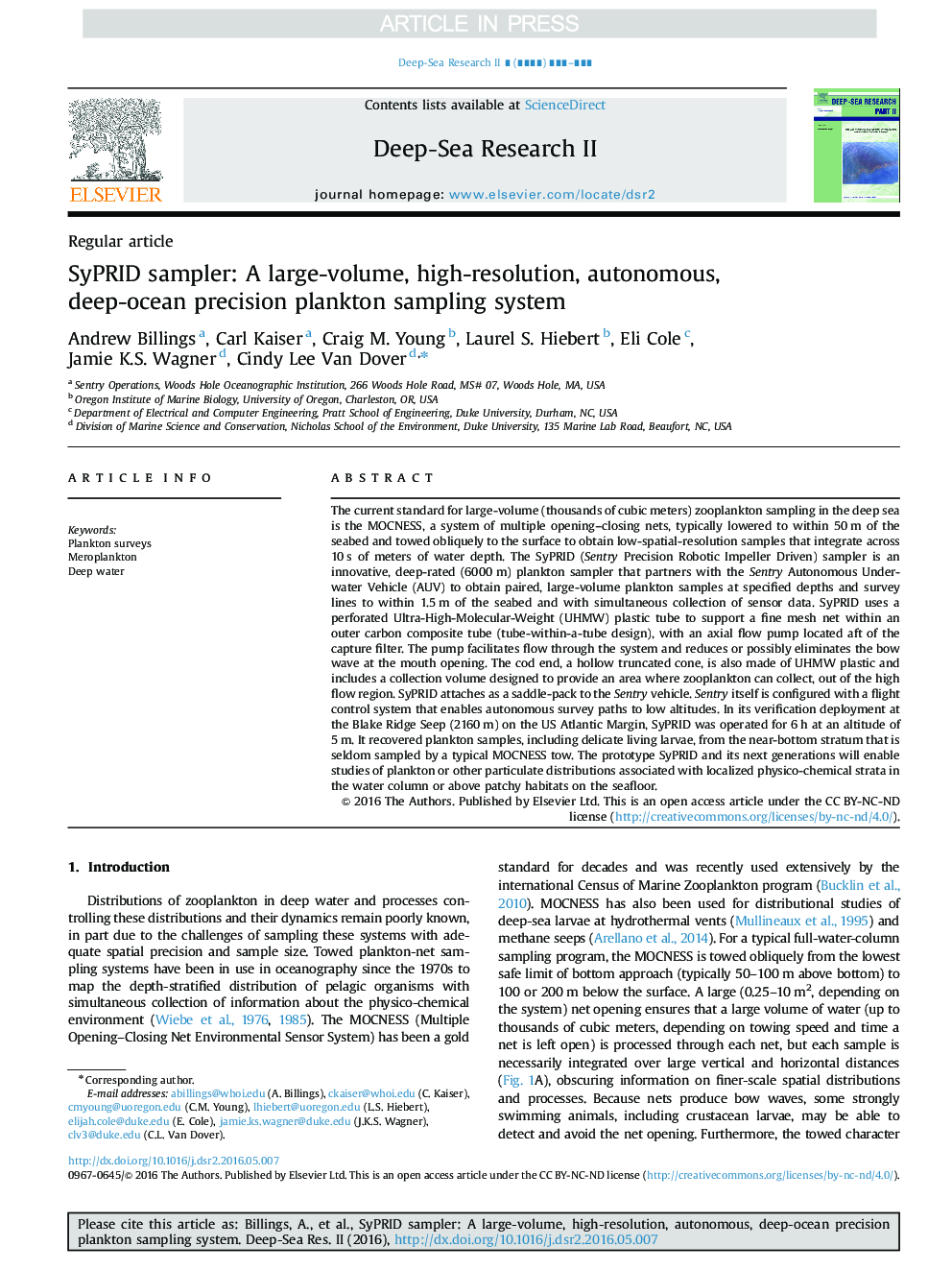| کد مقاله | کد نشریه | سال انتشار | مقاله انگلیسی | نسخه تمام متن |
|---|---|---|---|---|
| 5764836 | 1626405 | 2017 | 10 صفحه PDF | دانلود رایگان |
عنوان انگلیسی مقاله ISI
SyPRID sampler: A large-volume, high-resolution, autonomous, deep-ocean precision plankton sampling system
دانلود مقاله + سفارش ترجمه
دانلود مقاله ISI انگلیسی
رایگان برای ایرانیان
کلمات کلیدی
موضوعات مرتبط
مهندسی و علوم پایه
علوم زمین و سیارات
زمین شناسی
پیش نمایش صفحه اول مقاله

چکیده انگلیسی
The current standard for large-volume (thousands of cubic meters) zooplankton sampling in the deep sea is the MOCNESS, a system of multiple opening-closing nets, typically lowered to within 50Â m of the seabed and towed obliquely to the surface to obtain low-spatial-resolution samples that integrate across 10Â s of meters of water depth. The SyPRID (Sentry Precision Robotic Impeller Driven) sampler is an innovative, deep-rated (6000Â m) plankton sampler that partners with the Sentry Autonomous Underwater Vehicle (AUV) to obtain paired, large-volume plankton samples at specified depths and survey lines to within 1.5Â m of the seabed and with simultaneous collection of sensor data. SyPRID uses a perforated Ultra-High-Molecular-Weight (UHMW) plastic tube to support a fine mesh net within an outer carbon composite tube (tube-within-a-tube design), with an axial flow pump located aft of the capture filter. The pump facilitates flow through the system and reduces or possibly eliminates the bow wave at the mouth opening. The cod end, a hollow truncated cone, is also made of UHMW plastic and includes a collection volume designed to provide an area where zooplankton can collect, out of the high flow region. SyPRID attaches as a saddle-pack to the Sentry vehicle. Sentry itself is configured with a flight control system that enables autonomous survey paths to low altitudes. In its verification deployment at the Blake Ridge Seep (2160Â m) on the US Atlantic Margin, SyPRID was operated for 6Â h at an altitude of 5Â m. It recovered plankton samples, including delicate living larvae, from the near-bottom stratum that is seldom sampled by a typical MOCNESS tow. The prototype SyPRID and its next generations will enable studies of plankton or other particulate distributions associated with localized physico-chemical strata in the water column or above patchy habitats on the seafloor.
ناشر
Database: Elsevier - ScienceDirect (ساینس دایرکت)
Journal: Deep Sea Research Part II: Topical Studies in Oceanography - Volume 137, March 2017, Pages 297-306
Journal: Deep Sea Research Part II: Topical Studies in Oceanography - Volume 137, March 2017, Pages 297-306
نویسندگان
Andrew Billings, Carl Kaiser, Craig M. Young, Laurel S. Hiebert, Eli Cole, Jamie K.S. Wagner, Cindy Lee Van Dover,